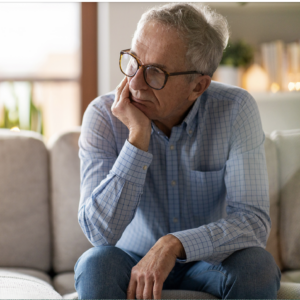As Things Stand: More Evidence Why You Should Limit Your Sitting

As Things Stand: More Evidence Why You Should Limit Your Sitting
September 20, 2023
You’ve heard it before and we’ve said it before: Sitting is the new smoking. Long stretches spent sitting in a chair can cause dire consequences for your physical health and mental well-being. The evidence has been building for years. For example, even just an hour’s worth of sitting means your blood circulation slows, and you’re collapsing your torso from likely hunching a bit, which means you’re taking in less oxygen because your lungs and diaphragm have no room to expand. More comprehensively, all sorts of negative health consequences result from extended periods of sitting. There is data to show that by extended sitting you increase your risk of such chronic illnesses as diabetes, heart disease, and even some types of cancer. You’re also likely to negatively impact your sleep quality, bone health, and even mental health. And in the most recent research, scientists have found that there is a significant association between sedentary behavior (sitting for long periods with little physical activity) and the risk of dementia in older adults. Published in JAMA Network, this new study collected data from over 50,000 participants, aged 60 years and older. Subjects were followed over a 7-year period and for those who sat 10 hours a day or longer (whether continuously or spread throughout the day), the risk of dementia climbed as the number of hours of sedentary behavior rose. While there was no association between dementia risk and sitting less than 10 hours a day, think about your usual day: Are there more days than you care to admit where your total time in a chair or on the couch exceeds 10 hours? Forget about sitting down to watch TV and instead, read about the new dementia/sitting study here.
The CDC suggests that the average American spends between 6.5 and 8 hours a day sitting. The group Just Stand (which has a calculator to predict your risk of “sitting disease”) suggests that sitting between 4-8 hours a day puts you at medium risk for all sorts of negative health consequences and above 8 hours of sitting, you’re at high risk. What could happen? In addition to the predictable musculoskeletal discomfort you’ll likely experience in your neck, shoulders, back, and legs, you’ll be slowing down your metabolism, reducing your blood flow, increasing your risk of high blood pressure, and even raising your chances of premature death. In fact, the World Health Organization attributes insufficient physical activity to be the cause of over 3 million deaths around the world each year.
If you occasionally stand up, will that solve the problem? While excessive sitting is definitely hazardous for your health, just standing up alone will likely not be of sufficient help. Experts recommend actual physical movement, even if only brief periodic bouts of walking about, as a way to cut down the risks of excessive sitting. Occasional standing up is certainly better than prolonged periods of sitting but for many of us, long periods of standing also have their own health consequences, including muscle fatigue, back pain, and leg swelling. Of course, for some of us, standing up from a sitting position poses its own challenges. There are some strategies you can use to better position and foist yourself up and out of a chair, including sitting on firm seats so you don’t sink in, raising the height of your chair (or toilet) to make standing and sitting easier (you can always buy furniture risers), sliding to the edge before attempting to stand and even using assisted devices on your bed or your chair so that you have something to grab as you stand and sit.
Ultimately physical movement is the best antidote to prolonged sitting, even if only of light intensity. Of course, you can always engage in what’s called “active sitting,” which could include flexing your feet while you sit, rolling your shoulders to discourage slouching, or making circles with your feet to keep your blood circulating. But the best thing to do to diminish the risks from sitting is to get up and get moving. It’s what your body was meant to do.







